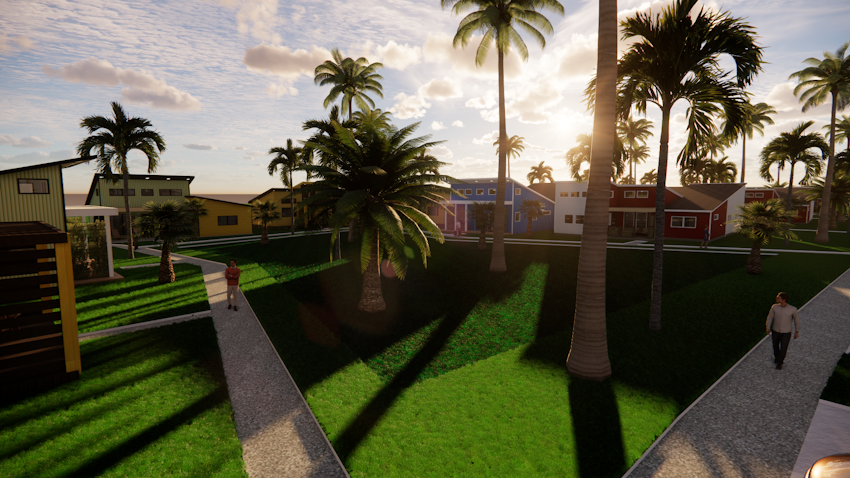Origins
Shortly after Hurricane Harvey, Harris County began collaborating with homebuilders to address the replacement of the many homes lost to the storm, especially for those whose properties were purchased by the County. This collaboration gave rise to a stakeholder group aimed at exploring alternative methods of developing subdivisions to create more attainable housing.
The initiative's goal was to identify alternatives to the existing standards in homebuilding and site design that could lead to substantial cost reductions. As new site design methodologies are developed, it becomes necessary to update infrastructure design to support these innovations. Regrettably, infrastructure design often lags behind the evolving planning strategies, especially in high-density settings.
The aim was to involve the private sector in leveraging their expertise to construct communities and houses in a cost-effective manner. As an incentive, the County would permit varying standards for certain projects or zones, provided the applicant's project met the qualifications. The term "Imagination Zone" was coined by this group of stakeholders, selected to convey that the County was receptive to any and all concepts and ideas that made sense. The foundational idea was to enable the creation of an "Imagination Zone" by anyone whose concept was sensible and promoted the objective of affordable housing.
The intention was for Harris County to adopt the concepts generated by this group and apply them to their five (now four) self-developed projects funded by the GLO. These projects would serve as prototypes or models for the private sector to emulate.
Regrettably, the "Imagination Zone" initiative has fallen inactive and was not completely realized by Harris County.
What Now?
Even though the initiative has become dormant, several original stakeholders, along with a team of acclaimed developers, engineers, and land planners, have reunited to carry on with this endeavor.

Creating truly affordable single-family homes requires a reimagining of both the community and the homes themselves. A thorough examination of infrastructure and housing costs is essential to identify better alternatives.
Cottage courts have been included as a feature in the County's Imagination Zone manual and were also incorporated into the recent amendments to the City of Houston's Chapter 42 platting ordinance, as a segment of the Livable Places initiative. A more comprehensive discussion on this topic is available under the section titled 'Our Communities'.
These homes and eco-villages represent a fresh trend in community development, fostering an indoor/outdoor lifestyle that promotes community and sociability, all while emphasizing an ecologically friendly way of living - "A New Way of Living."
The majority of funding for affordable housing typically includes federal tax dollars to subsidize home construction. Although well intentioned, it comes with a cost, in both time and money.
Instead of depending on federal funding, the aim is to construct and sell homes at a cost that won't require a subsidy, or a very minimal one if that. It is preferable for any subsidies to be given directly to purchasers through down payment assistance, mortgage buy-downs, or land trust acquisitions.
The lack of attainable housing is largely due to the limited financial resources of government agencies, which have traditionally been the source of funds for most new affordable housing initiatives. These resources are finite. The larger the subsidies, the fewer projects that can be funded.
Innovations CDC is a non-profit 501(c)(3) Community Development Corporation (CDC).
Although not a complete solution, this initiative could significantly enhance the availability of new, affordable single-family homes.




